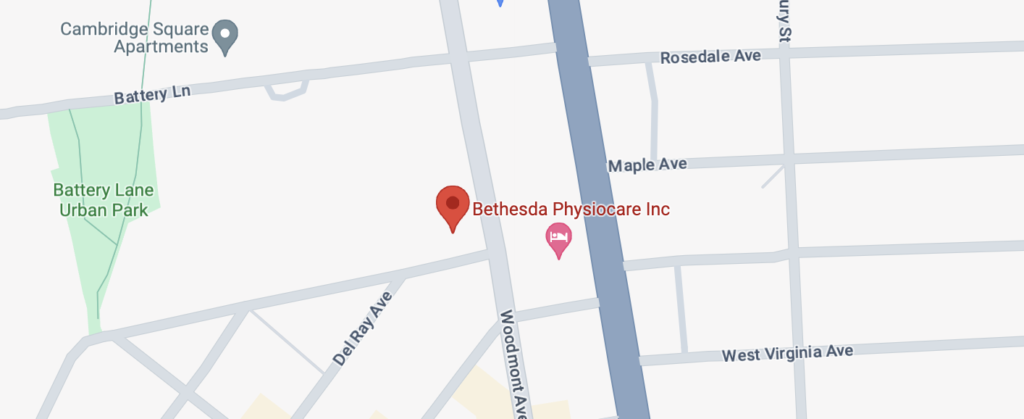
Our joints assist in movement. When a joint is compromised, movement is compromised. And when movement is compromised, so is health and quality of life. The joints that suffer the most injuries are the knees, shoulders, and hip joints. In recent decades, improvements in medicine, technology, and surgical procedures have improved outcomes for knee surgery patients, but there is always a road to recovery. The road is different for everyone, but it’s the route and decisions people make along the way that impacts the long-term outcome, lifestyle, and mobility for years to come.
How does physical therapy assist in this road to recovery? As movement experts, we guide patients through the strengthening, balancing, and mobilizing aspects of returning to normal. Effective rehabilitation is the key to a patient’s return to the life they loved.
What Does Total Knee Replacement Surgery Consist of?
Total knee arthroplasty, or total knee replacement surgery, is a surgical procedure that partially recreates and resurfaces a knee that is damaged by arthritis or injury. Chronic knee pain is a common musculoskeletal issue in the United States and, in more severe cases, requires surgical intervention. Metal and plastic parts are used to cap the joint. The procedure involves cutting away bone and cartilage from the thigh bone, shinbone, and kneecap and replacing it with synthetic parts or a prosthesis. Patients that engage in physical therapy have shown improved functional outcomes and mobility.
The necessity for surgery is often caused by osteoarthritis. This causes the joint to suffer slow degeneration and disease of the articular surfaces. Other types of knee surgery include kneecap surgery, partial knee replacement, meniscus repair, meniscus transplant, ACL reconstruction, and more. All forms of knee surgery will benefit from an individualized physical therapy program.
Who Needs Total Knee Replacement Surgery?
There are about 7 million Americans living with total knee or hip replacement. As Baby Boomers reach retirement age, these numbers might increase, but it’s not just elderly patients who get knee replacement surgeries. Athletes, construction workers, and military veterans can also see a high rate of knee surgeries.
The Three Key Recovery Points After Knee Surgery
Total knee replacement surgery requires a diligent rehabilitation protocol. Everything from diet (avoiding certain foods) to how quickly and how often patients move their legs can have augmented consequences down the line. Like any form of physical recovery, patients need to be actively engaged in their recovery process, but our job as physical therapists is to guide the patient. Rehabilitation outcomes after surgery are described by knee strength, range of motion, ability to perform daily activities, walking, balance, and quality of life.
The three key points that physical therapy helps in addressing after surgery, include:
Strength
Immediately after surgery, it is important to maintain blood flow in the area to promote healing and faster recovery, as well as to prevent blood clots. So a physical therapist works with you to encourage various exercises that improve circulation to legs and feet, which also helps move the joint and improve knee movement. These exercises can include slow repetitions of straight leg raises, ankle pumps, knee bends, knee strengthening exercises while lying down, and more.
Walking short distances with some assistance soon after surgery is also important in restoring strength. Purposeful, slow, and careful movements are key here.
Range of Motion
Prior to surgery, patients suffering from osteoarthritis or knee injury, have limited range of motion. This refers to a lack of functional movement of the joint. The range of motion is measured and understood by degrees. After knee replacement, full extension is a major goal of therapy and rehabilitation.
In order to walk, a 0 degree of knee extension is needed to ensure a stable gait, so increasing range of motion is necessary. This will begin with slow exercises that use gravity to help the knee straighten out. Then, seated exercises can help in strengthening the muscles. Throughout these exercises, breathing is an important part to remain relaxed and letting the body stretch naturally. Your physical therapist will guide you through these movements to ensure optimal results and minimize the risk of injury.
Balance
Ultimately, physical rehabilitation aims to provide the body with the balance it needs to perform daily activities and to walk uncompromised. Prior to surgery, patients suffering from osteoarthritis often feel their knees give out because the joint is unstable. Therapy aims to improve stability after the surgical procedure and help prevent that so the risk of falling is reduced.
Studies have shown that balance training helps improve outcomes for patients of total knee replacement, particularly older patients. Randomized studies showed that gait exercises improved step length and stability. Exercises that work on and improve balance can include movements like side step walking, shuttle walking, toe and heel walking, and other targeted stabilization movements.
Learn More About Knee Rehabilitation With Proper Physical Therapy and Physiocare
If total knee replacement surgery is in your future, your road to recovery can be enhanced with the right physical therapy program. As physical therapists, our mission is to guide patients towards better outcomes that improve their quality of life and allow them to return to an active lifestyle.
Do you want to learn more about what we do here? Call Bethesda Physiocare and learn how we can help you strengthen your knees for a fuller and more active life!



